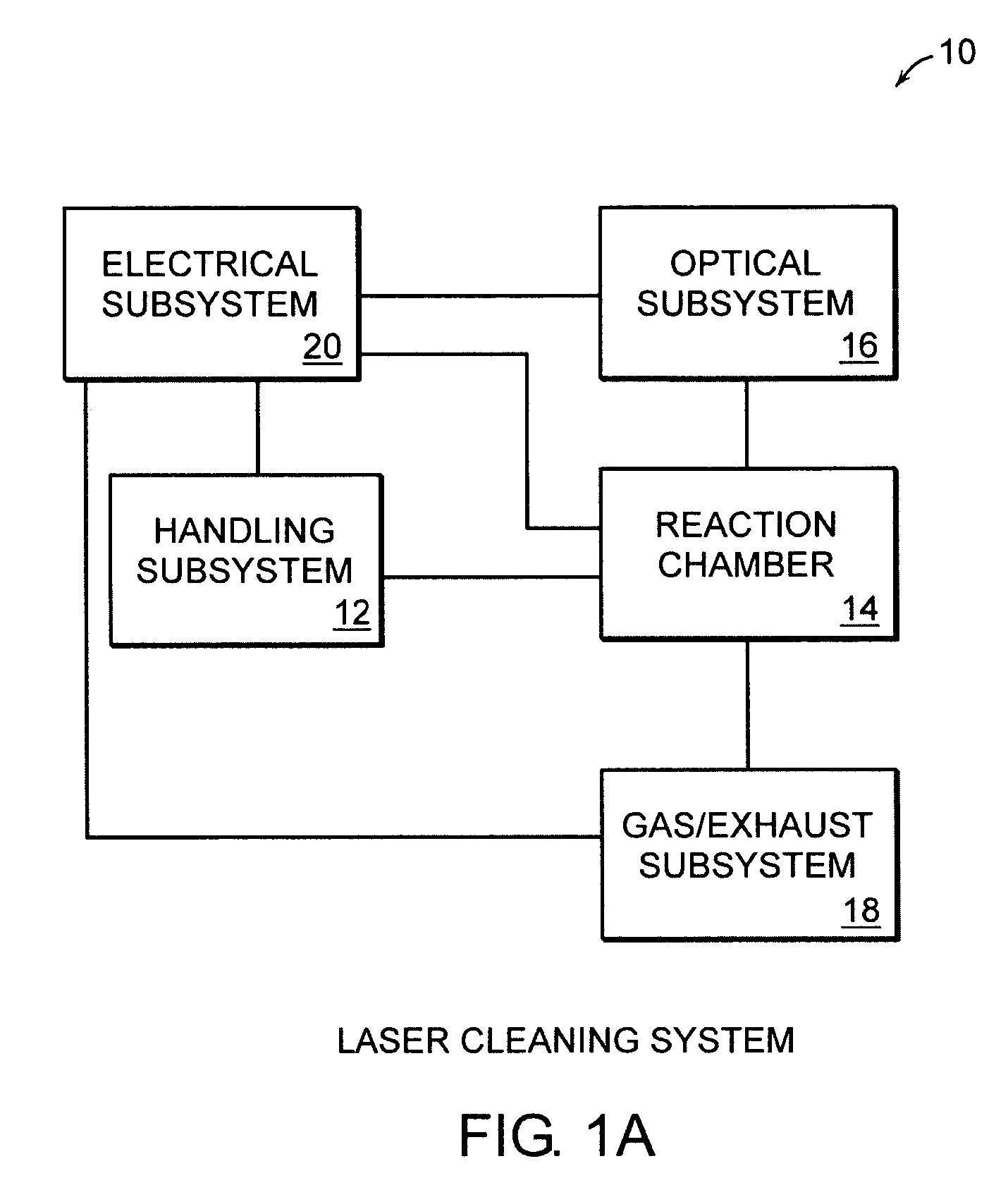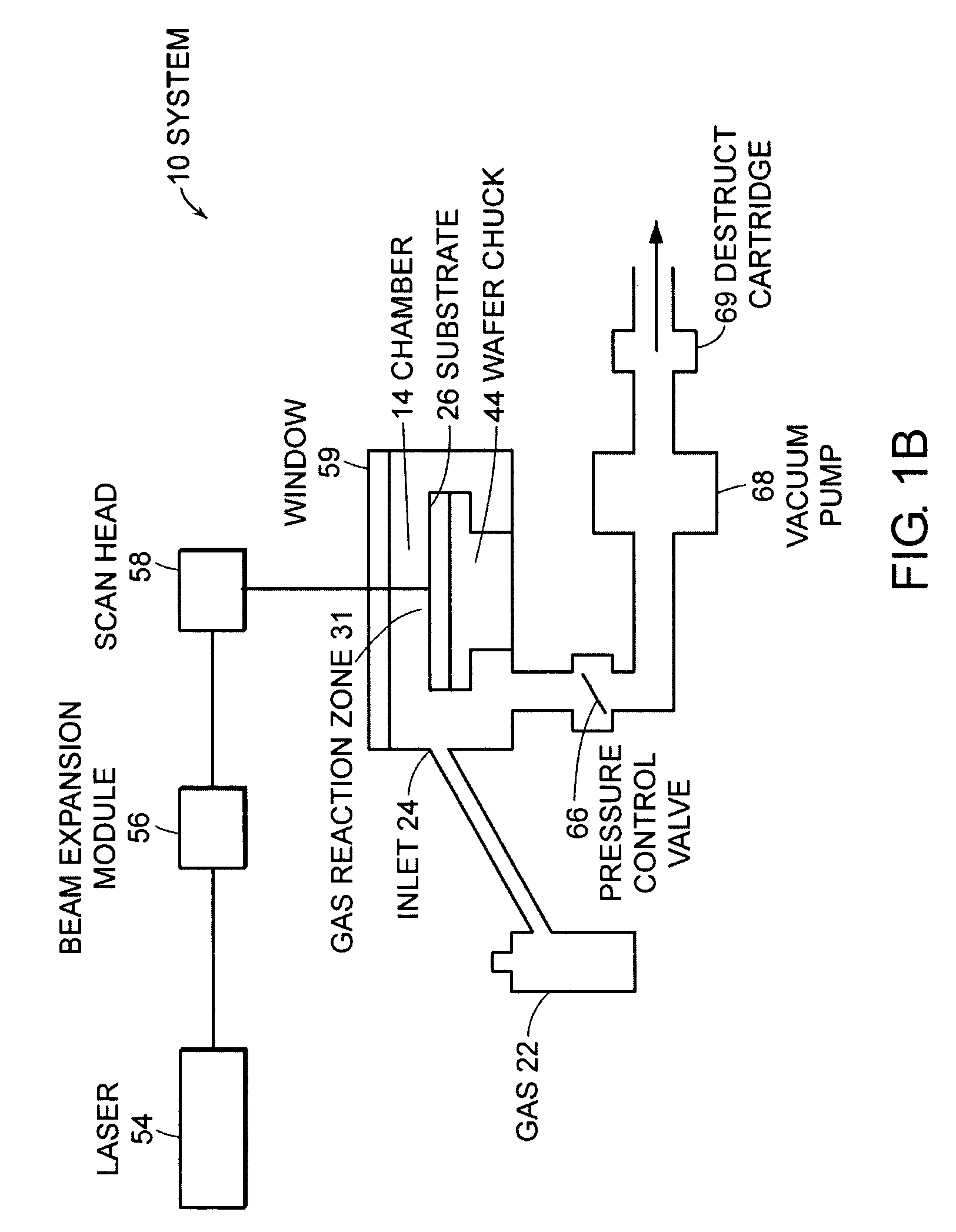Method for surface cleaning
a surface cleaning and surface technology, applied in the direction of metallic material coating process, chemical vapor deposition coating, fluid pressure measurement, etc., can solve the problems of affecting the performance of the end product, occupying significant and costly floor space, complex equipment to deliver these chemicals in the ic industry, etc., to facilitate the state change of unwanted contaminants and facilitate removal.
- Summary
- Abstract
- Description
- Claims
- Application Information
AI Technical Summary
Benefits of technology
Problems solved by technology
Method used
Image
Examples
Embodiment Construction
[0035]A preferred embodiment of the present invention consists of an automated, low cost, all-dry cleaning system that employs small volumes of oxygen, ozone and water vapor to remove photoresist and other organic residues, or matter, in a single step using a small laser emitting primarily 355 nm near-visible and residual 532 nm visible radiation wavelengths. By using embodiments of the invention, the surfaces of substrates are cleaned without leaving detectible roughening or detectible carbon residues. Substrate as used herein refers to any essentially planar surface having unwanted materials or substances disposed thereon. An example of a substrate is, but not limited to, a silicon wafer. For example, in one post cleaning test and analysis, the average carbon remaining from multiple readings was 3.27 Å. Use of a preferred embodiment of the invention also facilitates environmentally sound operations because no hazardous by-products requiring special handling or treatment are genera...
PUM
| Property | Measurement | Unit |
|---|---|---|
| wavelengths | aaaaa | aaaaa |
| wavelengths | aaaaa | aaaaa |
| pulse energies | aaaaa | aaaaa |
Abstract
Description
Claims
Application Information
 Login to View More
Login to View More - R&D
- Intellectual Property
- Life Sciences
- Materials
- Tech Scout
- Unparalleled Data Quality
- Higher Quality Content
- 60% Fewer Hallucinations
Browse by: Latest US Patents, China's latest patents, Technical Efficacy Thesaurus, Application Domain, Technology Topic, Popular Technical Reports.
© 2025 PatSnap. All rights reserved.Legal|Privacy policy|Modern Slavery Act Transparency Statement|Sitemap|About US| Contact US: help@patsnap.com



